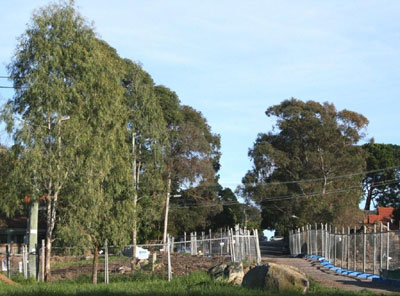
Castlecrag residents will be aware of the large area of land between Eastern Valley Way and Alpha Road with a prominent ‘For Sale’ sign. This is former Roads & Traffic Authority (RTA) land that was reserved for the Warringah Expressway corridor under the County of Cumberland Planning Scheme in 1951. The corridor was subsequently abandoned by the NSW Government in 1977 and the land was rezoned primarily for residential (low density housing) and open space purposes.
In 1999-2000 Willoughby Council joined with the RTA and the Department of Urban Affairs & Planning to produce a land planning strategy for the surplus corridor land in the Willoughby Council area. The land Willoughby bounded by Eastern Valley Way, Windsor Road, Mowbray Place, Remuera Street and Alpha Road, Willoughby was known as Precinct 2 in the strategy, which was completed by JBA Urban Planning Consultants Pty Ltd in June 2000. The land use in Precinct 2 had been a mixture of low density residential housing and public open space. The outcome of the strategy was to allow medium density residential (110 dwellings) and public open space (1.5 hectares).
In 2002 Landcom was appointed to co-ordinate the development of the Precinct 2 housing and new public park. The Master Plan for the precinct involved extensive community consultation, which resulted in the proposed new dwellings being reduced in number to 80 townhouses. Landcom subsequently withdrew from further involvement in the scheme, resulting in the site being offered for sale to a new developer. At its meeting on 23 June 2008, Council delegated authority to the Mayor and General Manager to finalise a Deed of Covenant to bind the new owner of the land (now known as Willoughby Market Garden) to complete the existing Masterplan and development approvals.
As reported in past issues of The Crag, the area has a long history as the site of extensive Chinese market gardens. I was therefore interested to come across a report in the Daily Telegraph of Friday, 12 September 1913 with the heading ‘Opium Den Discovery at Willoughby’. While the article reflects social mores and attitudes of that era, I thought that readers might be interested in some extracts from the piece as follows:
The Chief Secretary has received a report from Supt. Goulder in regard to an opium den in Willoughby. Publicity was recently directed to this place owing to a quarrel between a habitual opium smoker and the Chinese who kept it. According to the information now in the possession of the Chief Secretary, the opium smoking took place in a cottage on the outskirts of Willoughby, towards Middle Harbour, about 2½ miles from Chatswood station.
“Until recently,” says Inspector Goulder in his report, “the locality consisted almost entirely of gardens worked by Chinese, but the bulk of the land has been sub-divided for residential purposes. The cottage referred to has been in the occupation of a Chinese for a number of years and a white woman about 40 years of age who has lived with the Chinese for many years. The front part of the cottage was tenanted by another Chinese of advanced year, and for a number of months another white woman has been living there. This latter stated her age to be 31 years, and that she had been living with Chinese for about 18 years.”
The report goes on to point out that the Chatswood police appeared to have suspected that opium-smoking was carried on at this place, which they searched for opium on several occasions. In March 1911, the police detected a number of Chinese smoking opium, and four of them were successfully prosecuted. The report claims that there was no doubt that the older Chinese men had been visited for some months by a number of white women and men from various parts of the metropolitan district, and the cottage was no doubt an opium shop for the sale of opium.
Bob McKillop
